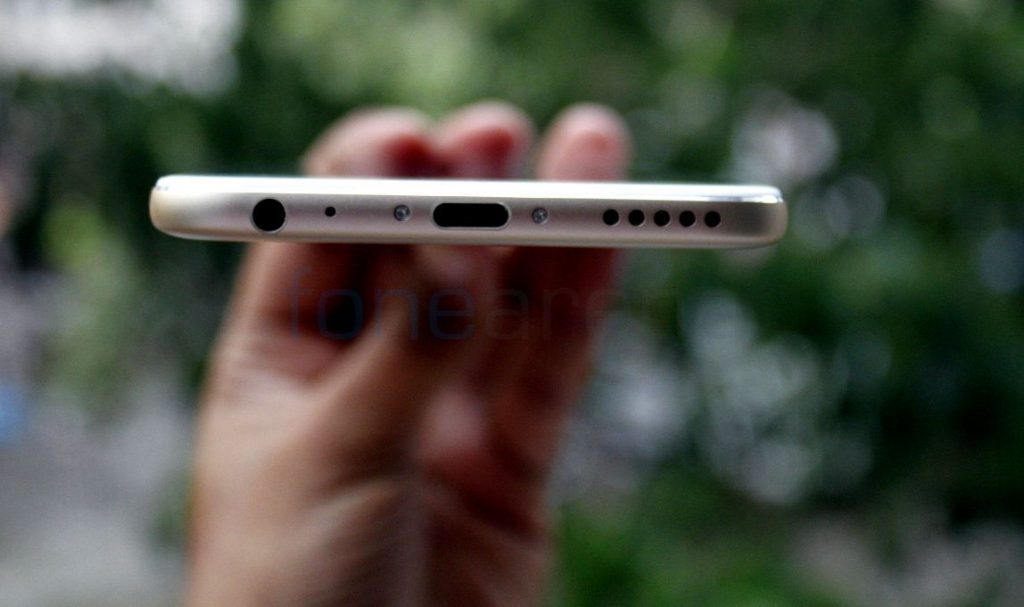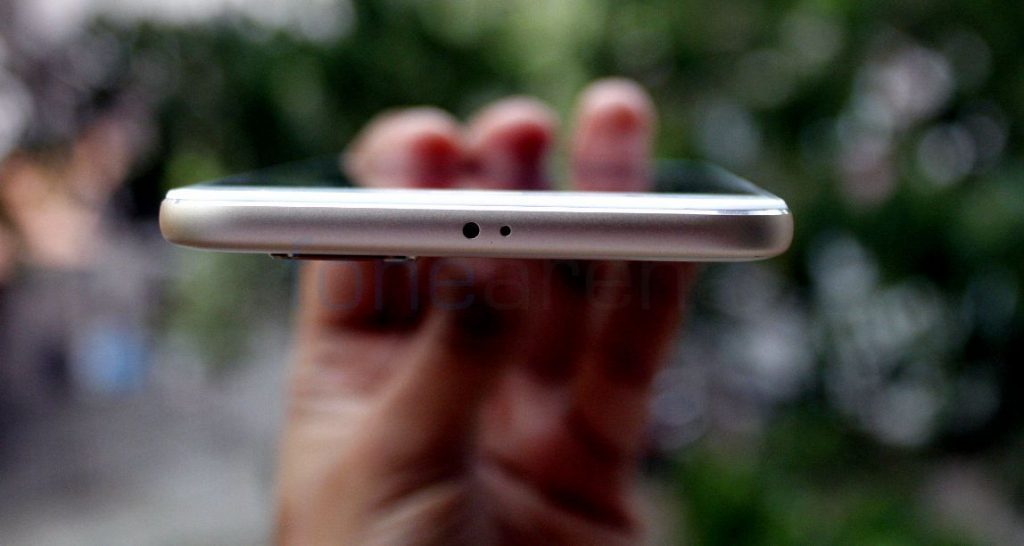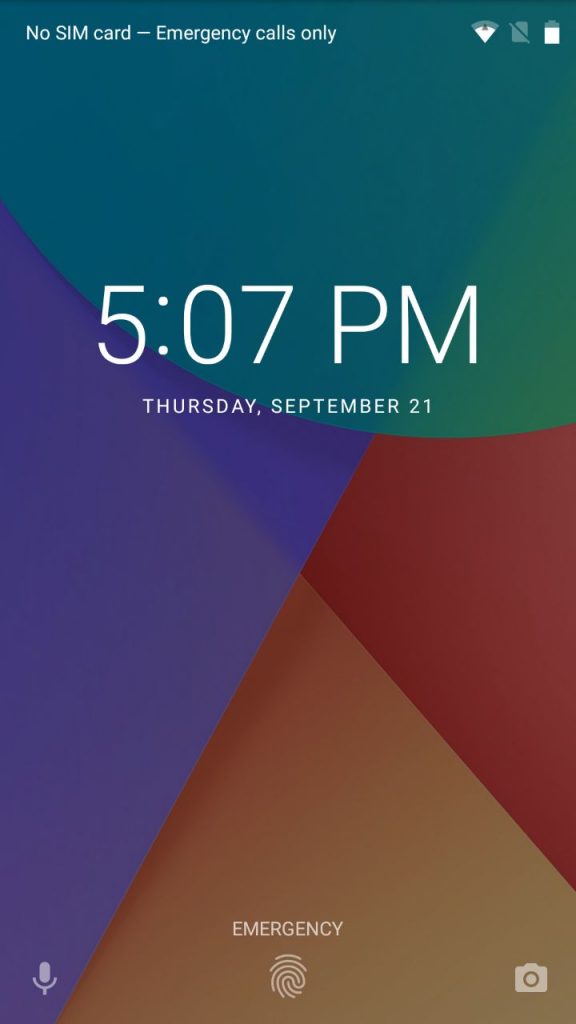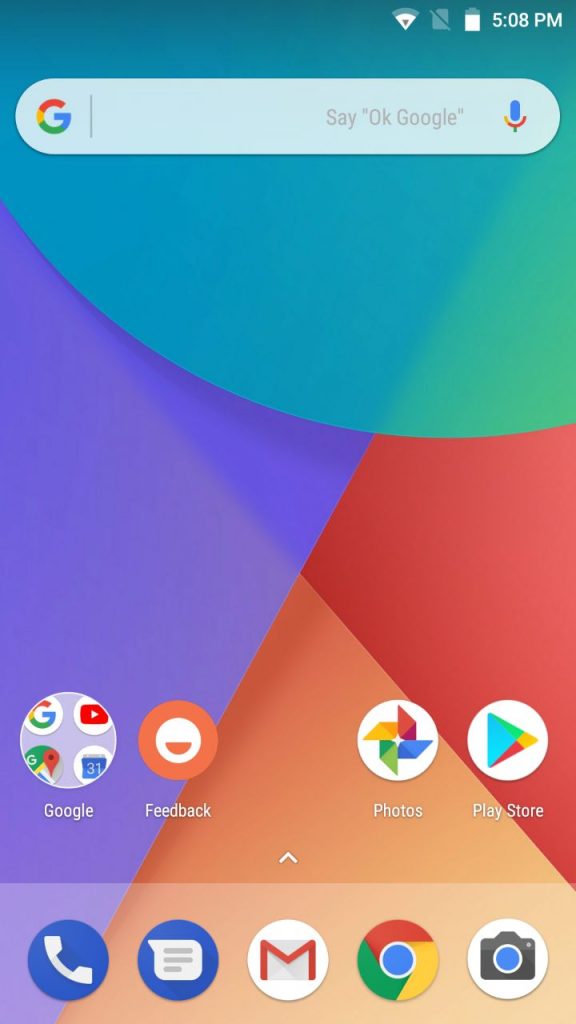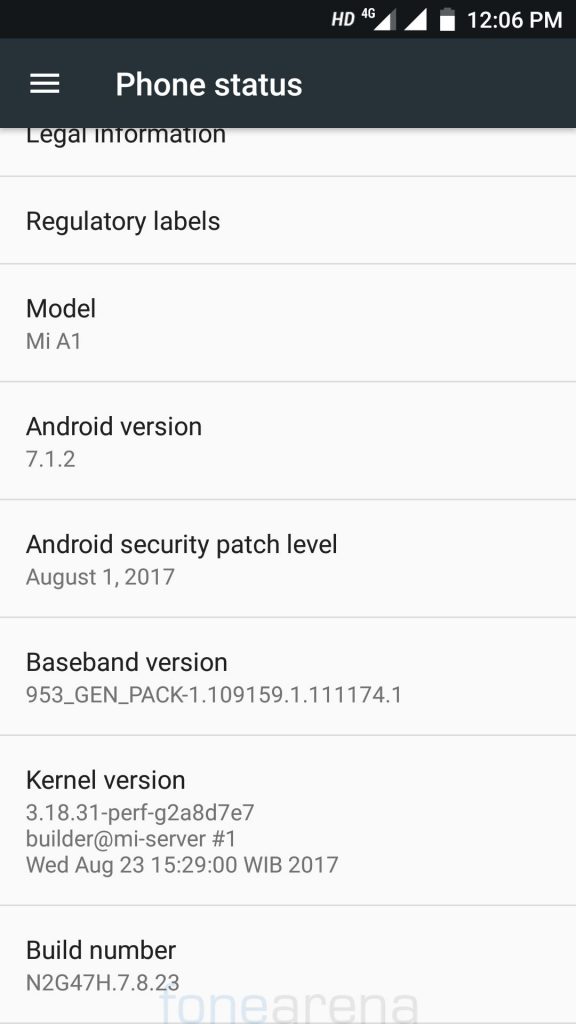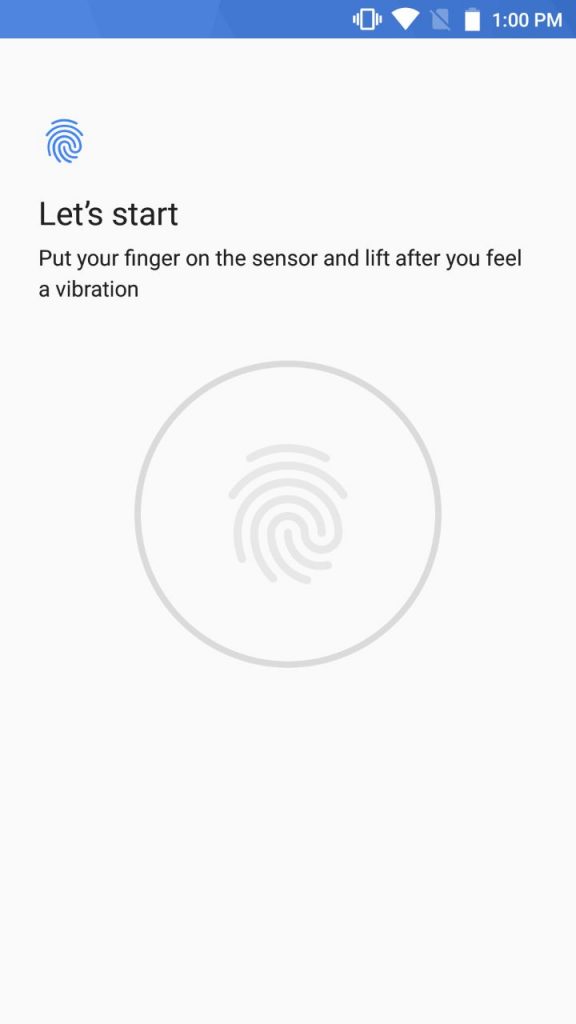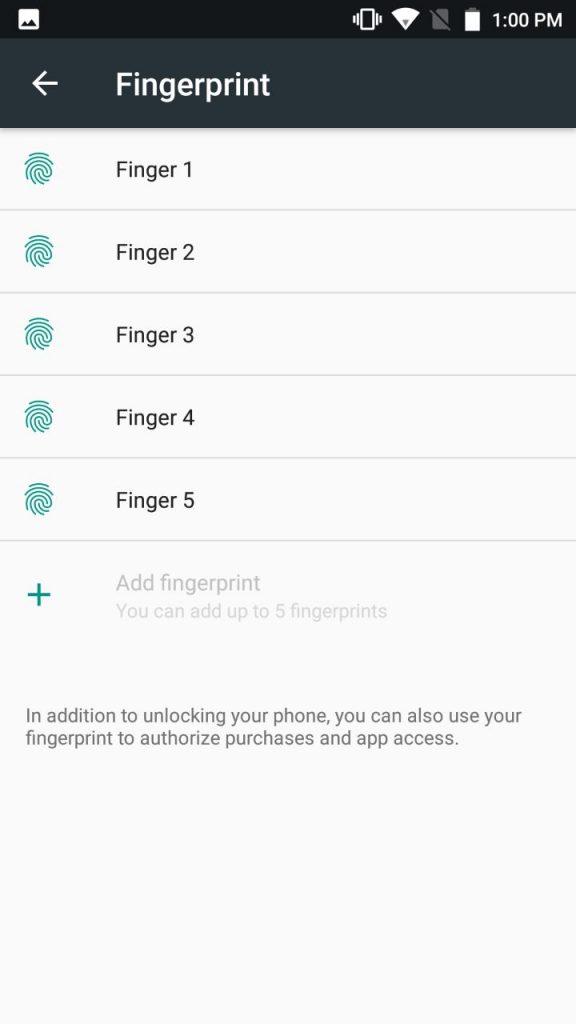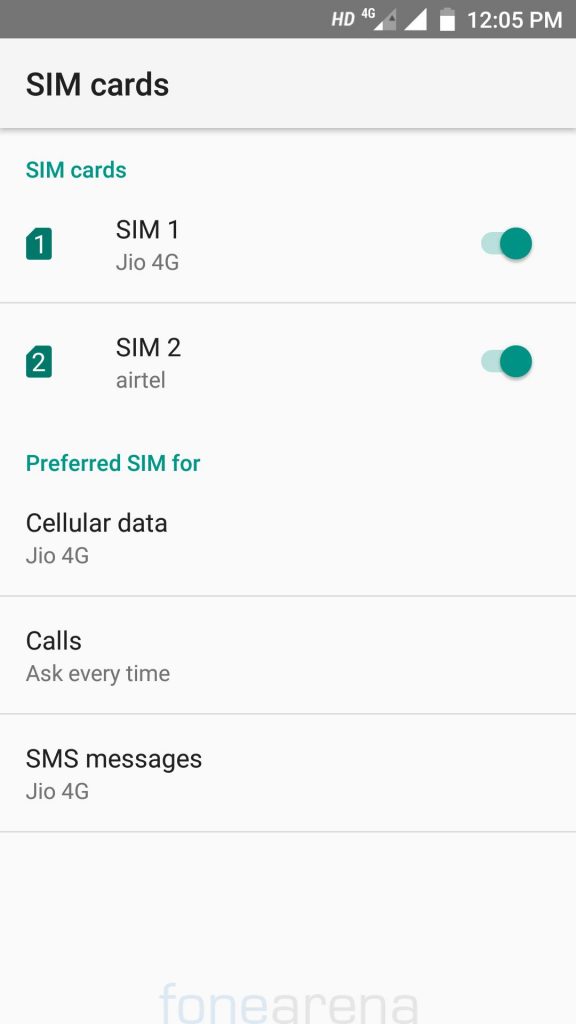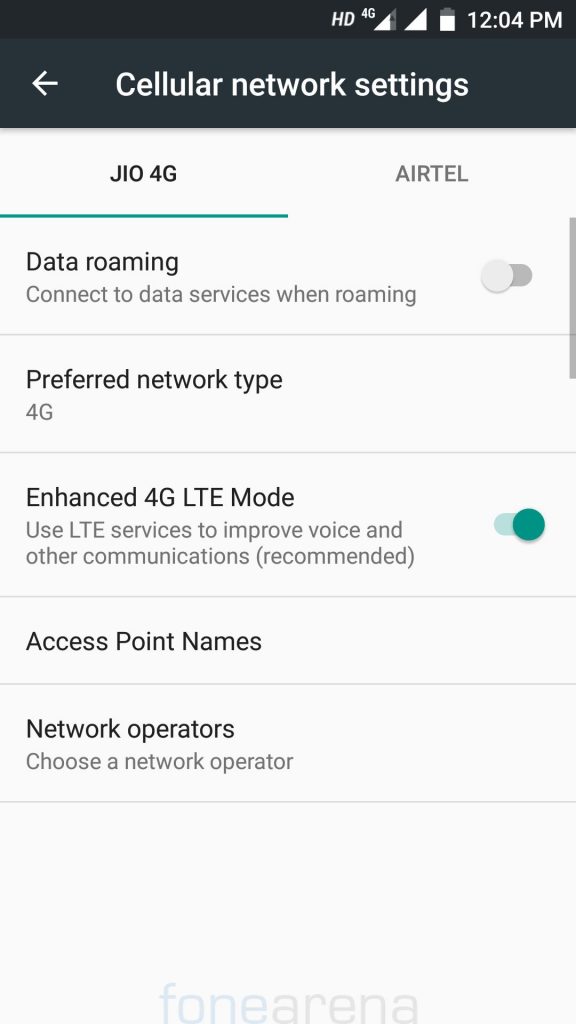
After a long gap, Google introduced an Android One smartphone in partnership with Chinese handset maker Xiaomi in the Indian market. Aiming at the mid-range segment, Xiaomi launched Mi A1 smartphone, which is the global variant of the Mi 5X that was introduced in China back in July. How good is the phone? Let us find out in the review.
Unboxing
Box Contents

- Xiaomi Mi A1 in Gold color
- 2-pin charger (5V-2A)
- USB Type-C Cable
- SIM Ejector Tool
- Quick start guide
Display, Design, and Hardware
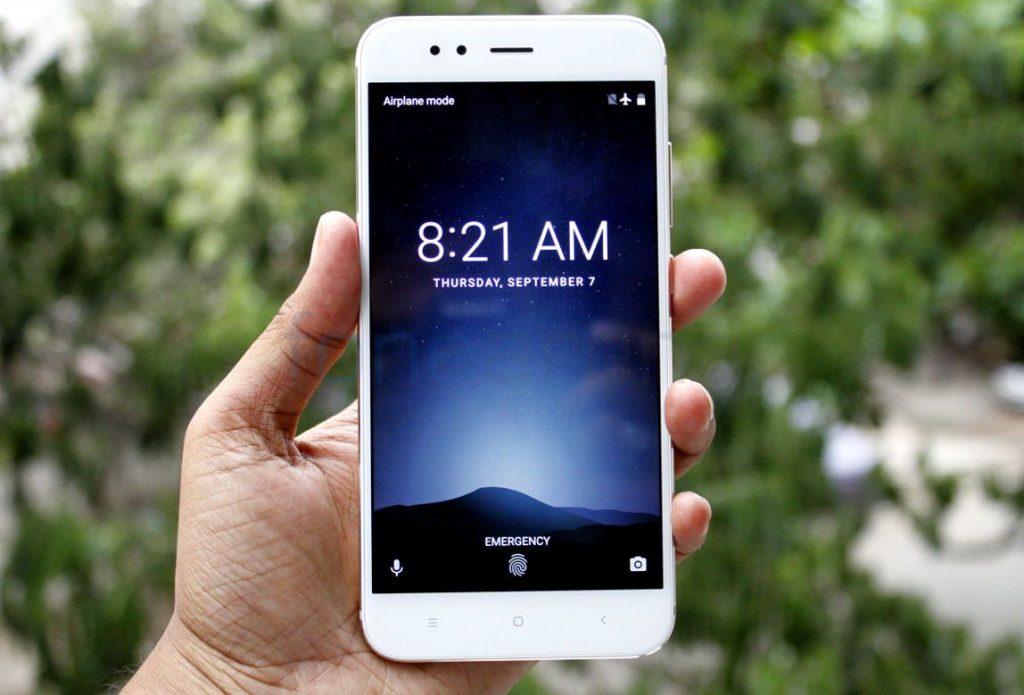
The Xiaomi Mi A1 sports a 5.5-inch (1920 x 1080 pixels) Full HD 2.5D curved glass LTPS display along with Corning Gorilla Glass protection. The display is bright enough, decent color reproduction, good viewing angles and average sunlight legibility. The phone has usual set of proximity and ambient light sensor next the 5-megapixel front camera and also features a notification LED. It also has capacitive touch buttons below the display that are backlit and also offer haptic feedback when pressed.
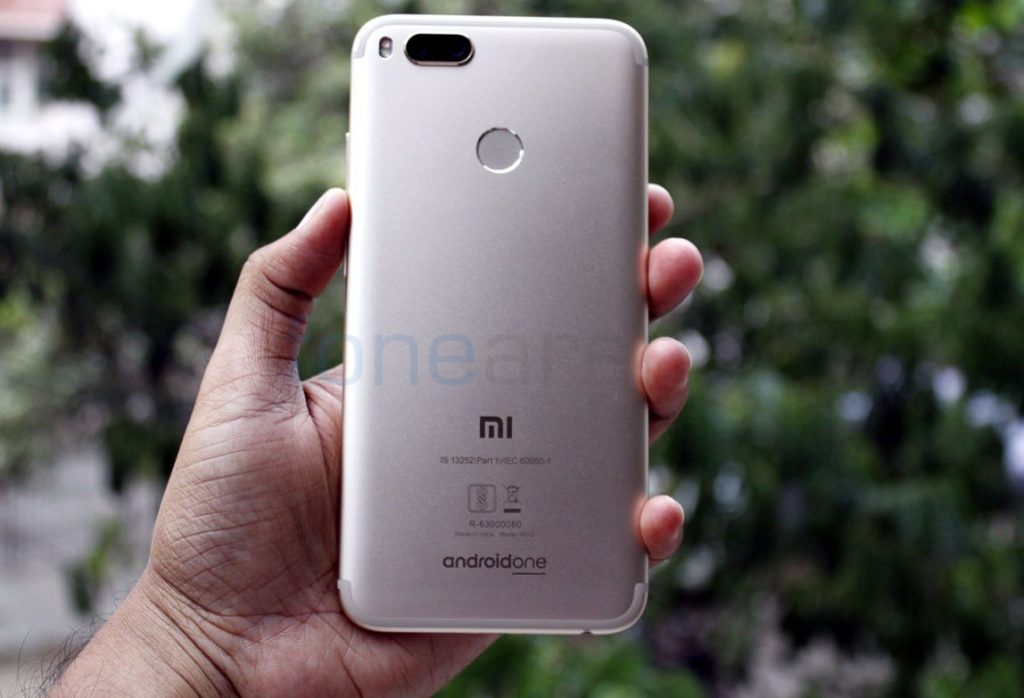
This device comes in a unibody metal design and feels solid in hand. It feels very comfortable and gives you a sort of control over it when using with two hands. Having said that, the design of the Mi A1 is old school and sort of boring of boring as well. In this case, we have nothing special to brag about the design language. The back side of the device looks kind of OnePlus 5 but bit beefed up. The phone is just 7.3mm thick and weighs 165 grams.
The right side of the device houses the volume rocker and power button. On the left, we have Hybrid Dual SIM slots. Moving down, we have 3.5mm audio jack, primary microphone, USB Type-C port and a speaker grille. On the top, we have an Infrared sensor and secondary microphone.
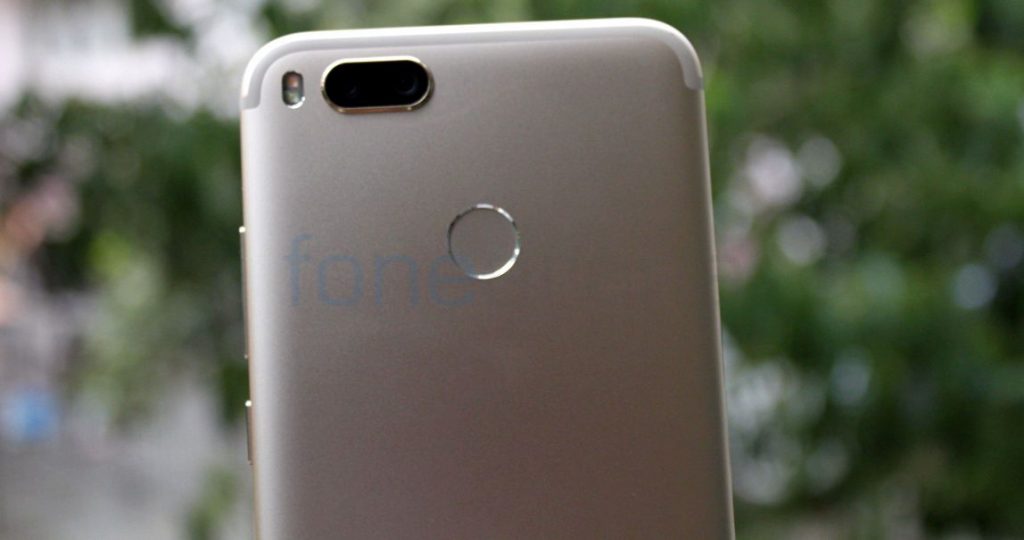
Turning back, we have 12MP dual rear camera setup, dual-tone led flash, and fingerprint sensor module just beneath it. It has 12MP dual rear cameras, one with a wide-angle lens and other with a telephoto lens offering portrait mode, background blur, 2x optical zoom and more. At the bottom, we have Mi and Android One branding as well.
Software
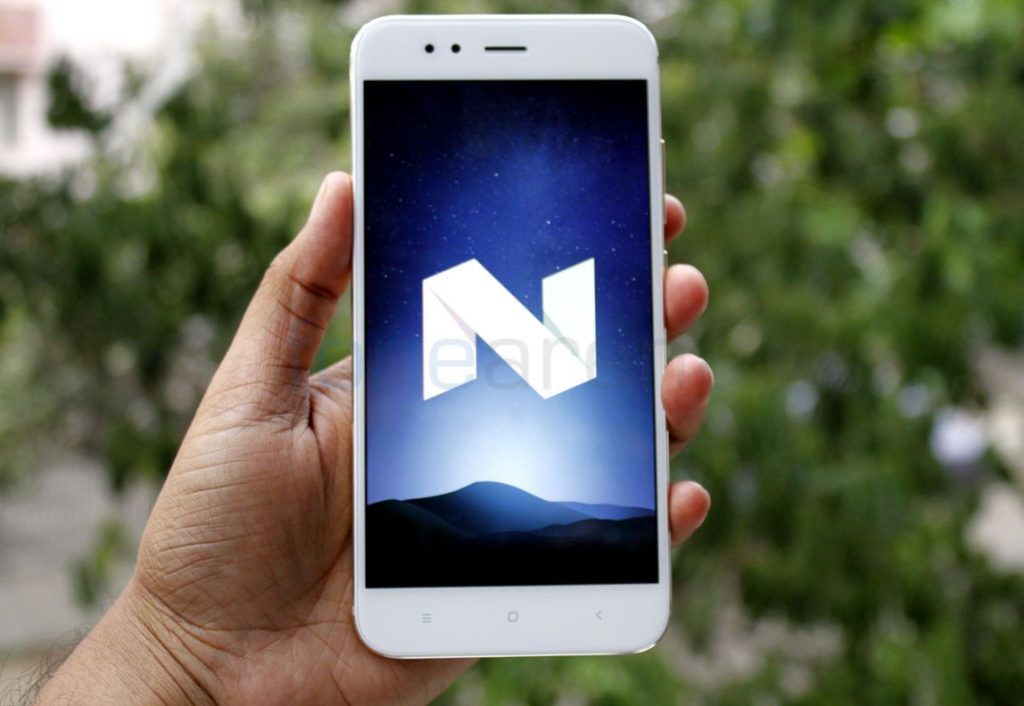
The Xiaomi Mi A1 is shipped with Android 7.1.2 Nougat out of the box. Unlike other Xiaomi devices, it comes with Stock Android with a couple of Xiaomi apps. From the lock screen, you can access Google assistant and camera app. At the launch, the company promised that it will get Android 8.0 (Oreo) by 2017 and also said that it will be one of the first phones to get Android P. Since it is an Android One phone, it comes with unlimited high-quality photo and video backups in Google Photos.
Unlike other Xiaomi phones with MIUI, this device follows the Pixel-launcher suit with a swipe up gesture. It also comes with a set of Google utility apps and a couple of Xiaomi apps — Mi Remote, Mi Community apps as I had mentioned above.
The Xiaomi Mi A1 comes with stock dialer UI and Google keyboard. During calls, the earpiece volume is good and there is no call drop as well. Audio through headset is good, thanks to the dedicated amplifier with advanced Dirac HD Sound. The loudspeaker output was good as well. It doesn’t have FM Radio.
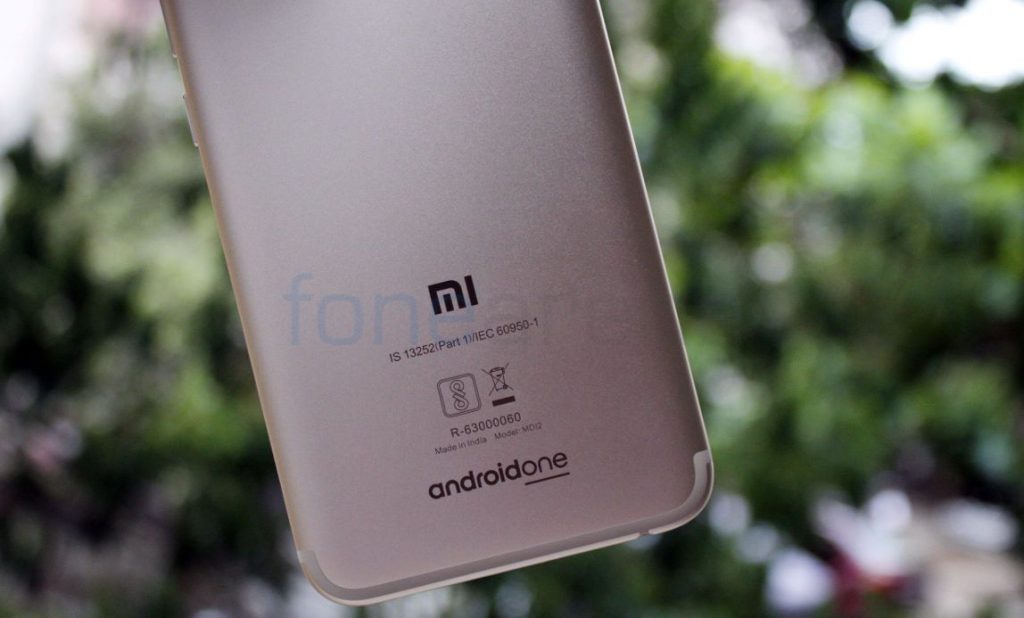
This device comes with 4GB RAM and 64GB internal storage which can be further expandable up to 128GB via MicroSD card slot. Out of 4GB RAM, you get around 2.4GB on first boot and 1.9GB in general. Talking about the storage, out of 64GB, you will get around 50GB free internal storage.
Fingerprint sensor
The Xiaomi Mi A1 have a fingerprint scanner on the back side of the device below the camera module. You can add up to 5 fingerprints on your device. It is quick to unlock the phone.
Performance
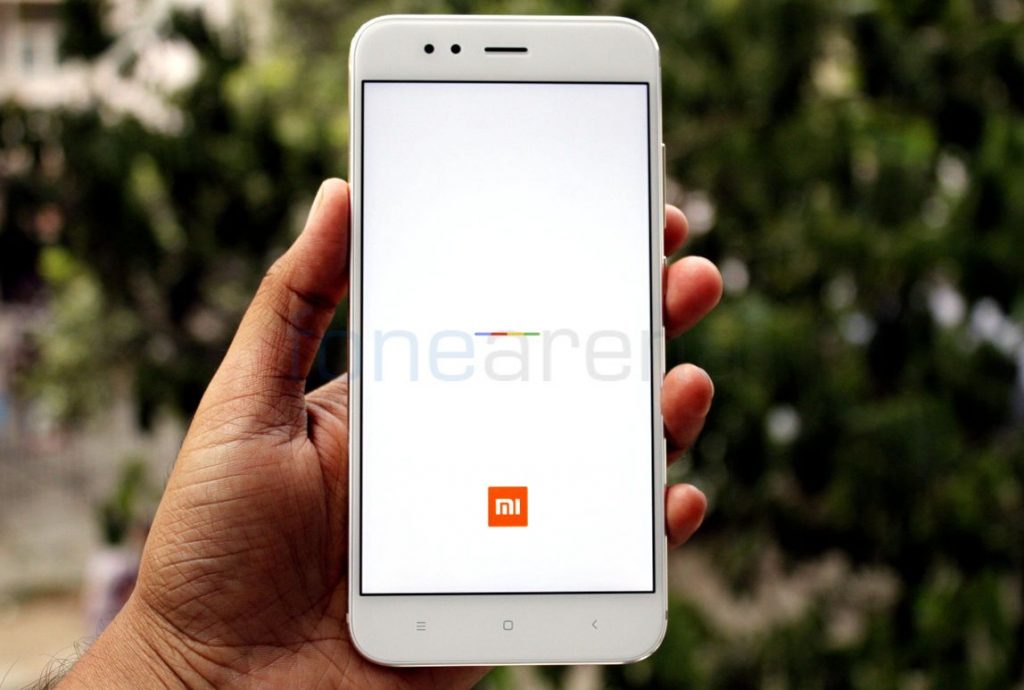
The Xiaomi Mi A1 is powered by an Octa-Core Snapdragon 625 14nm processor clocked at 2GHz along with 650MHz Adreno 506 as GPU. It is also complemented by 4GB RAM under the hood. In our real-time usage, the performance was flawlessly smooth and fast without any stutter, lag or hang. Thanks to 4GB RAM, the multi-tasking is much fluid than ever. During gameplay, we didn’t observe any frame drop or slowdowns. But playing games or using the camera for a long time warms the phone slightly. Overall, we have no problem at all, when it comes to performance factor. Check out some synthetic benchmark scores below.
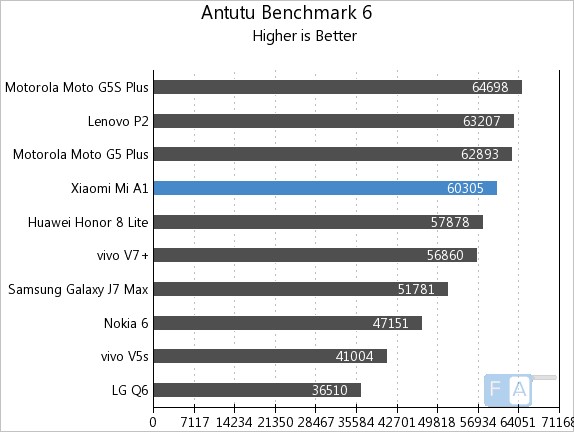
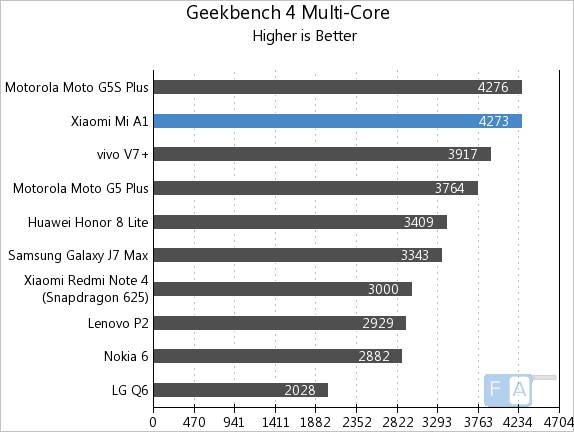
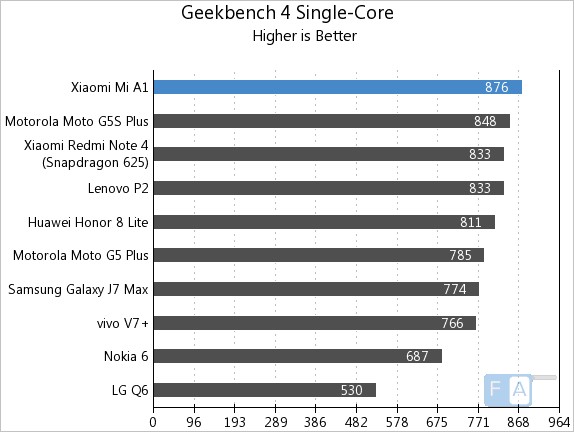

Camera
The Xiomi Mi A1 has a dual camera setup on the rear consisting of the 12MP rear camera with wide-angle lens f/2.2 aperture, dual-tone LED flash and a secondary 12MP camera with a telephoto lens with f/2.6 aperture, PDAF. On the front, it is taken care of 5MP selfie shooter.
Under daylight conditions, the Mi A1 rear camera produces a satisfactory result with finer details and good colors. The secondary camera too offers good bokeh effect but sometimes it struggles to locate definite edges. During low light situations, the output tends to be below average with lots of grains and blurred details. Moreover, the images with flash are average, as the light tends to overpower the subject. The 5MP front camera also is pretty decent for selfies but disappoints when it comes to low light situations.
Apart from this, the Xiaomi Mi A1 also offers 2x optical zoom along with the ability to take bokeh shots. Check out the image samples below (Click to view the full resolution sample).


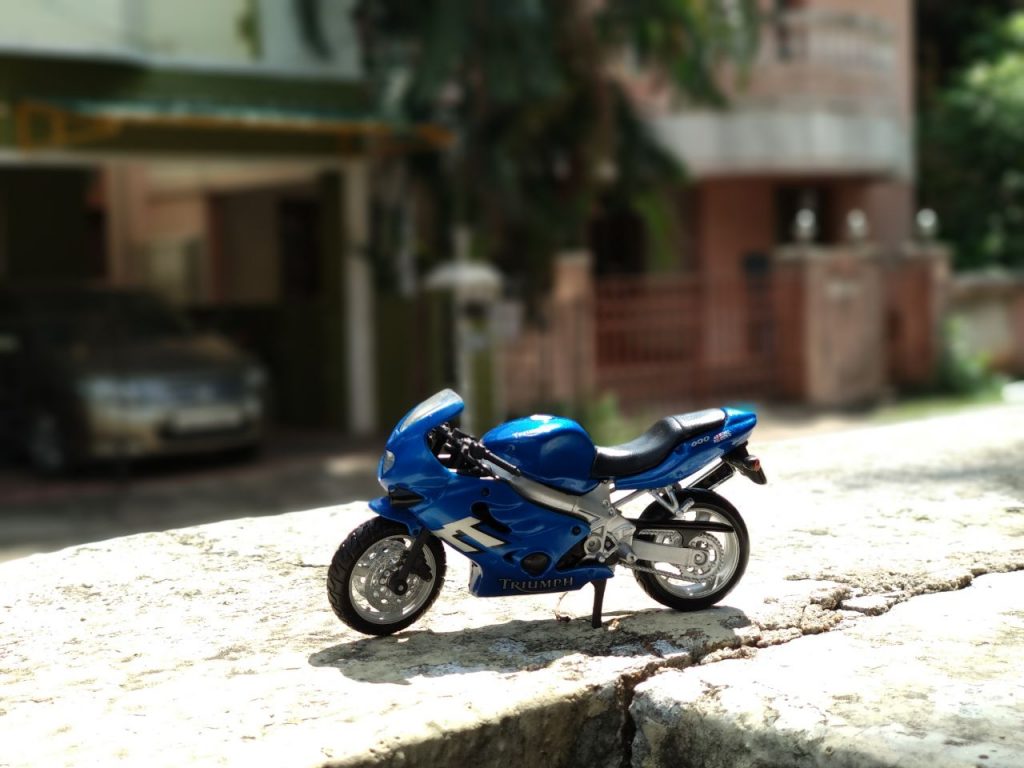
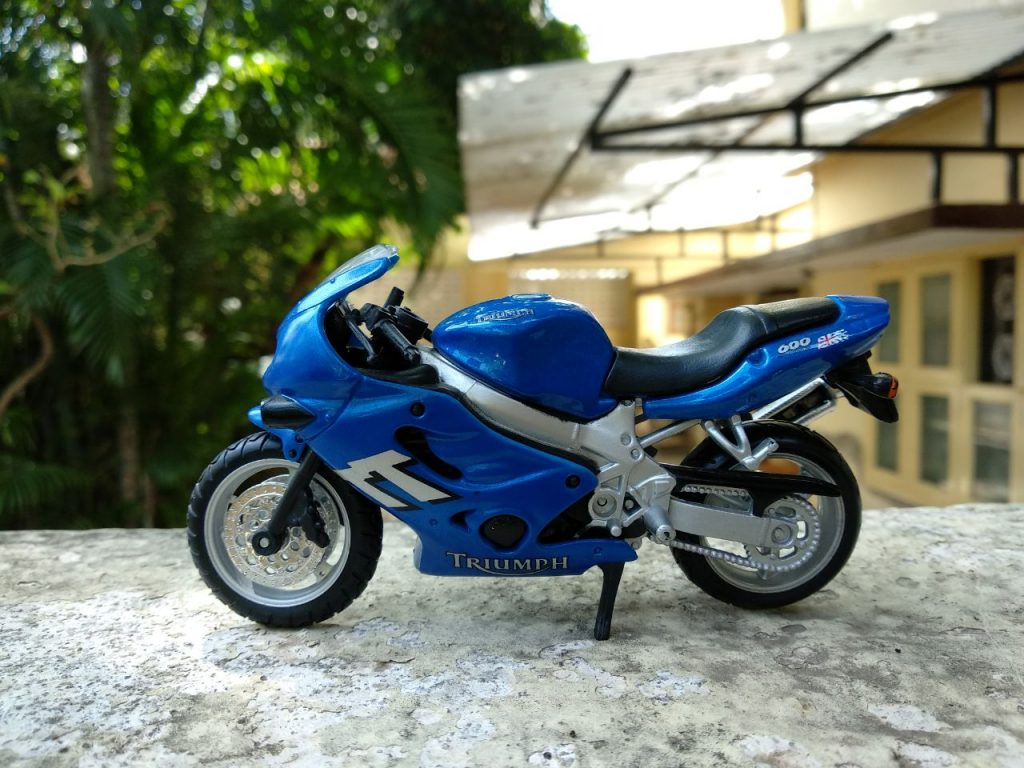
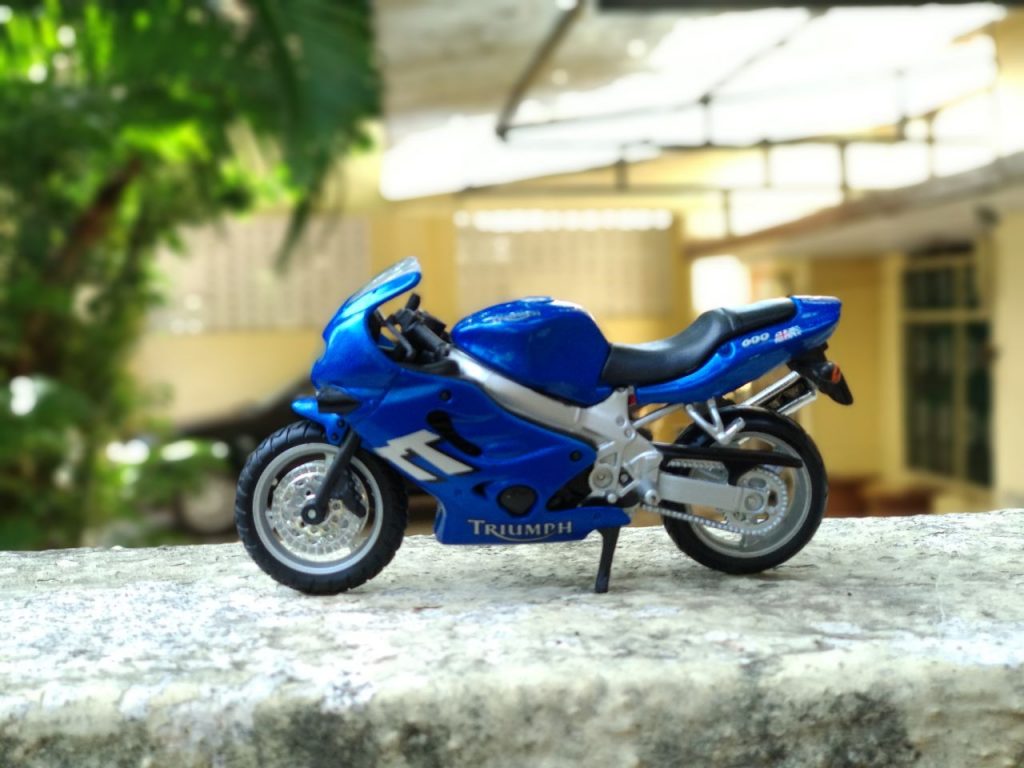



It can record videos at a maximum of 4K resolution and also has slow motion recording. Video quality is good and the audio is crisp, thanks to the secondary microphone. Check out the video samples below.
Connectivity
It has Dual SIM option in the settings that lets you customize each SIM cards. It has 4G connectivity with support for 4G VoLTE for Reliance Jio. Other connectivity features include WiFi 802.11 ac (2.4GHz + 5GHz), Bluetooth 4.2 and GPS. It also has USB OTG (on-the-go) support but lacks NFC.
Battery
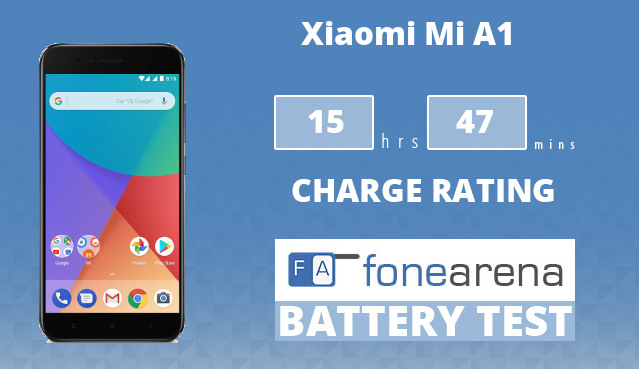
The Xiaomi Mi A1 is powered by 3080mAh built-in battery and comes with a 380v charger to handle power spikes. However, it doesn’t have fast charging technology. In terms of usage, it got us throughout a day perfectly, even with some intensive usage including gaming, watching videos on YouTube and other multi-tasking stuff.

In our battery test, the Xiaomi Mi A1 achieved a One Charge Rating of 15 hours and 47 minutes, which is good for a phone with a 3080mAh battery. Since it doesn’t have support for fast charging, it takes about 2 hours to charge the phone and 53 minutes to charge it from 0 to 50%. Check out the complete set of battery life test results here.
Conclusion
Leaving out the boring design, the Xiaomi Mi A1 with its all-rounding performance makes this smartphone a compelling device under mid-range segment. The Xiaomi Mi A1 comes in Black, Gold and Rose Gold colors are priced at Rs. 14,999 and goes on sale every week through Flipkart and Mi.com online and is also available at Mi Home stores and other offline retailers.
Pros
- Good performance
- Dual cameras
- Stock Android
Cons
- Average front camera
- Hybrid SIM slot

